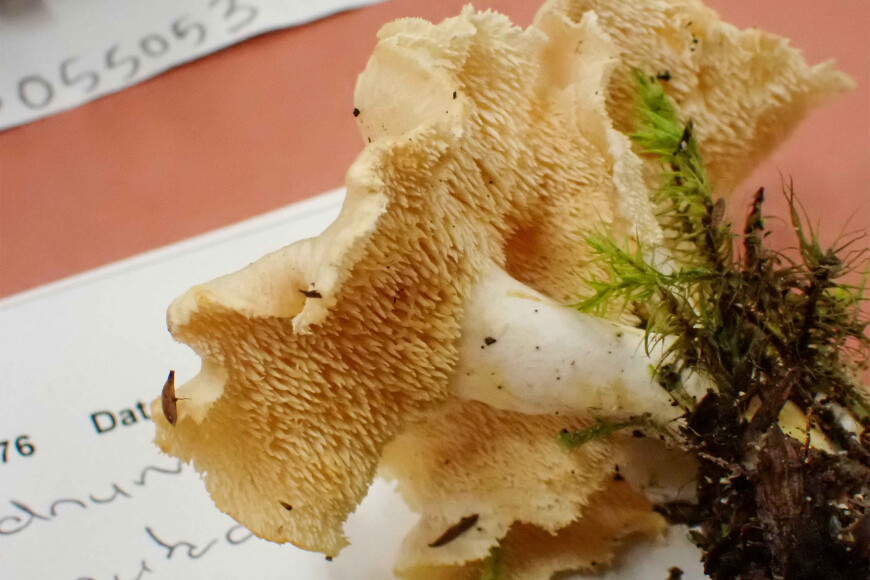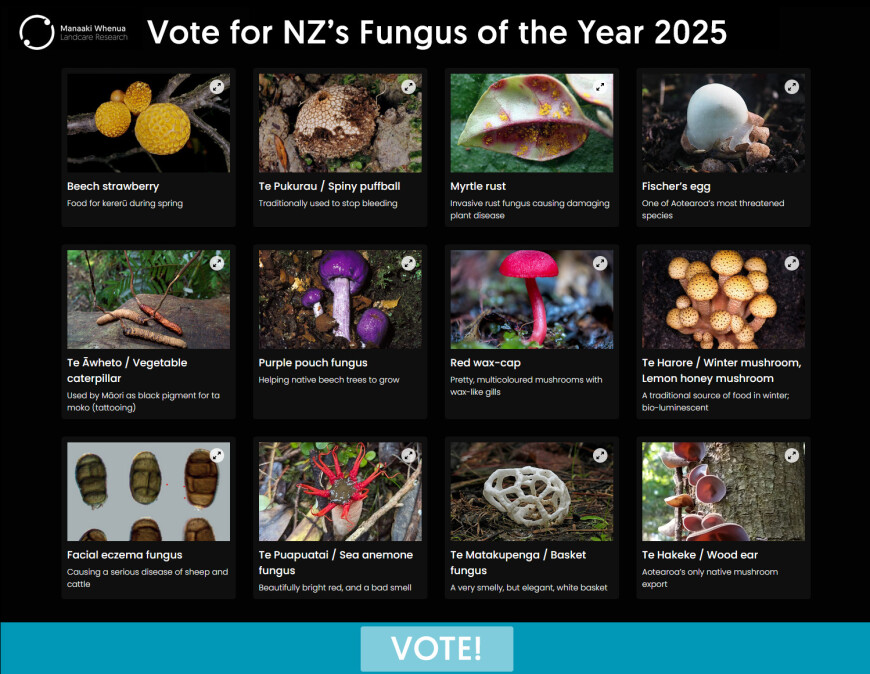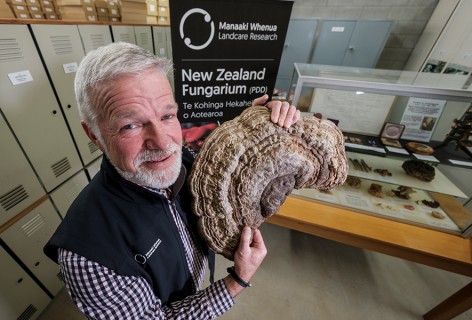Forays are organised by the Fungal Network of New Zealand Inc. with members drawn from Manaaki Whenua, Scion, universities, the Department of Conservation, iwi/hapu, NGOs, botanical societies, and the general community. Each year, the Foray aims to provide new knowledge of the fungi in our native forests and other environments, documenting new records of fungi, new host relationships, and possibly species new to science.
Several of the forests being accessed during this Foray are unlikely to have been previously studied for their fungi. The Foray is also a meeting point to share knowledge and help anyone interested in learning more about the amazing world of the Fungi, the second largest Kingdom of life on this planet.
Around 50 people have registered for the event from across the country, with lots of new faces. Over 4 days, participants will be observing and photographing fungi in surrounding native forests, where they have permission from iwi/hapu, DOC, and Council to collect. Photos will be entered on iNaturalist to document the finds and establish a snapshot of the fungi visible at this time.

On the specimen table at the Fungal Foray
Some specimens will be collected and brought back to Urenui Community Hall for identification and display purposes. Identification will be by a combination of professional expertise, literature, and microscope observations, coupled later with DNA sequencing. Specimens will be dried overnight and prepared for accessioning in the national collection, the NZ Fungarium, managed by Manaaki Whenua (Auckland), and also for collections at Scion (Rotorua) and the University of Otago.
Some specimens will also be cultured to produce a live colony on an agar medium, later to be deposited in the national living collection of fungi, deep frozen in liquid nitrogen. This collection, the ICMP Culture Collection, is also managed by Manaaki Whenua in Auckland.
Students and teachers were hosted from the adjacent Urenui School on Tuesday afternoon to show them some of the fungi in their forests, and on Wednesday 14 May the Foray participants presented illustrated talks on their fungal research or other relevant topics at the Hall.
Fungus of the Year 2025
This year, participants have developed a “Fungus of the Year” promotion to launch at the Foray – a simple online poll to engage and raise the profile of often-overlooked fungi:
Vote for NZ's Fungus of the Year 2025
Vote for your favourite fungus, or maybe vote for a fungus that is threatened, or culturally important, or edible, or (on the negative side) one that’s causing an important disease. As a Kingdom entirely separate from plants, and more closely related to animals, fungi come in so many shapes, colours and forms. This promotion was run some years ago when the ‘sky blue mushroom’ on our $50 banknote gained the most votes, so we’ve removed that option from the 12 fungal candidates for 2025.


